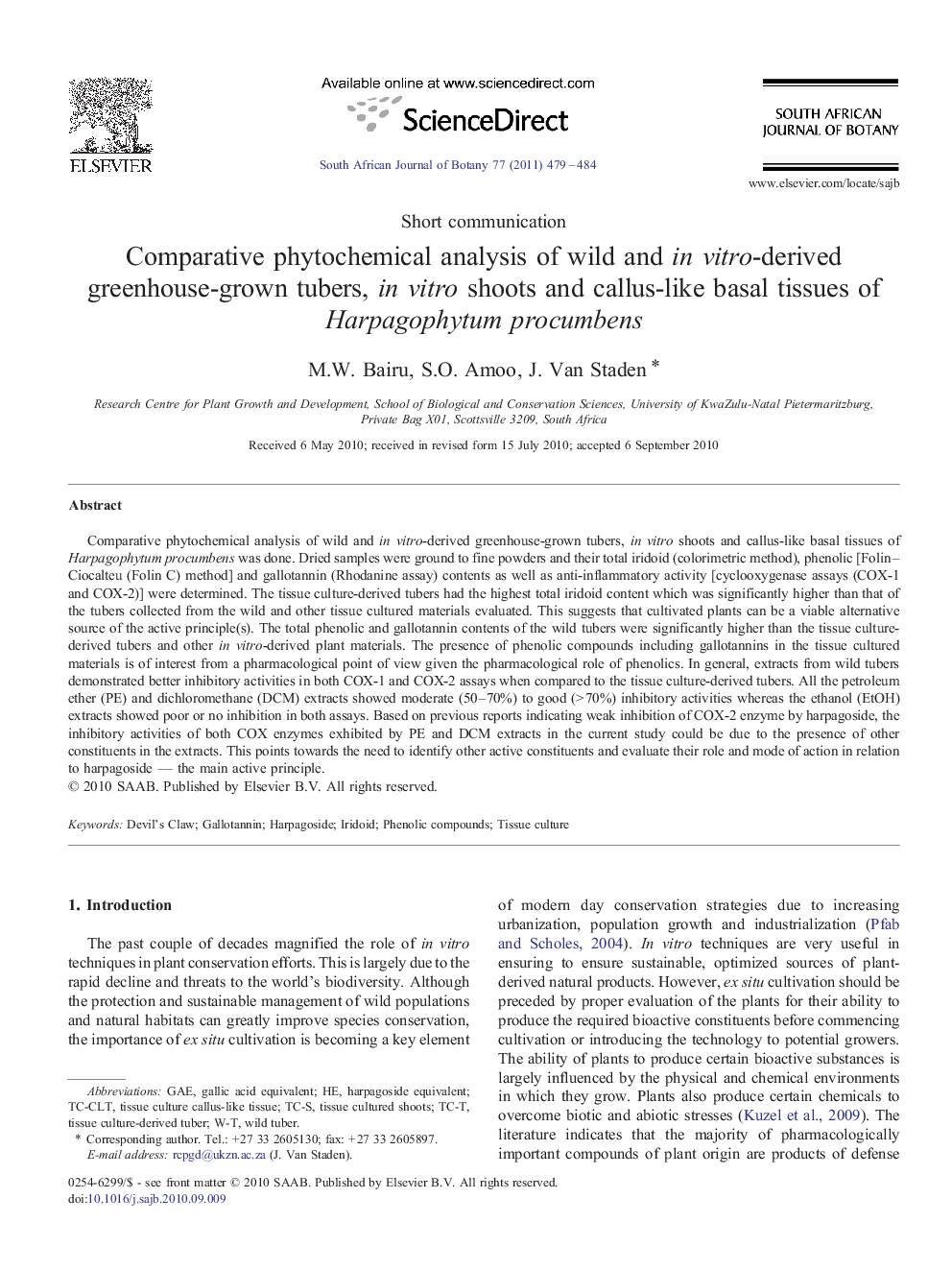| کد مقاله | کد نشریه | سال انتشار | مقاله انگلیسی | نسخه تمام متن |
|---|---|---|---|---|
| 4521444 | 1625183 | 2011 | 6 صفحه PDF | دانلود رایگان |

Comparative phytochemical analysis of wild and in vitro-derived greenhouse-grown tubers, in vitro shoots and callus-like basal tissues of Harpagophytum procumbens was done. Dried samples were ground to fine powders and their total iridoid (colorimetric method), phenolic [Folin–Ciocalteu (Folin C) method] and gallotannin (Rhodanine assay) contents as well as anti-inflammatory activity [cyclooxygenase assays (COX-1 and COX-2)] were determined. The tissue culture-derived tubers had the highest total iridoid content which was significantly higher than that of the tubers collected from the wild and other tissue cultured materials evaluated. This suggests that cultivated plants can be a viable alternative source of the active principle(s). The total phenolic and gallotannin contents of the wild tubers were significantly higher than the tissue culture-derived tubers and other in vitro-derived plant materials. The presence of phenolic compounds including gallotannins in the tissue cultured materials is of interest from a pharmacological point of view given the pharmacological role of phenolics. In general, extracts from wild tubers demonstrated better inhibitory activities in both COX-1 and COX-2 assays when compared to the tissue culture-derived tubers. All the petroleum ether (PE) and dichloromethane (DCM) extracts showed moderate (50–70%) to good (> 70%) inhibitory activities whereas the ethanol (EtOH) extracts showed poor or no inhibition in both assays. Based on previous reports indicating weak inhibition of COX-2 enzyme by harpagoside, the inhibitory activities of both COX enzymes exhibited by PE and DCM extracts in the current study could be due to the presence of other constituents in the extracts. This points towards the need to identify other active constituents and evaluate their role and mode of action in relation to harpagoside — the main active principle.
Research Highlights
► Comparative phytochemical analysis of Devil's Claw tubers
► Greenhouse cultivation of Devil's Claw tubers
► Production of iridoids by greenhouse-grown Devil's Claw tubers
Journal: South African Journal of Botany - Volume 77, Issue 2, April 2011, Pages 479–484